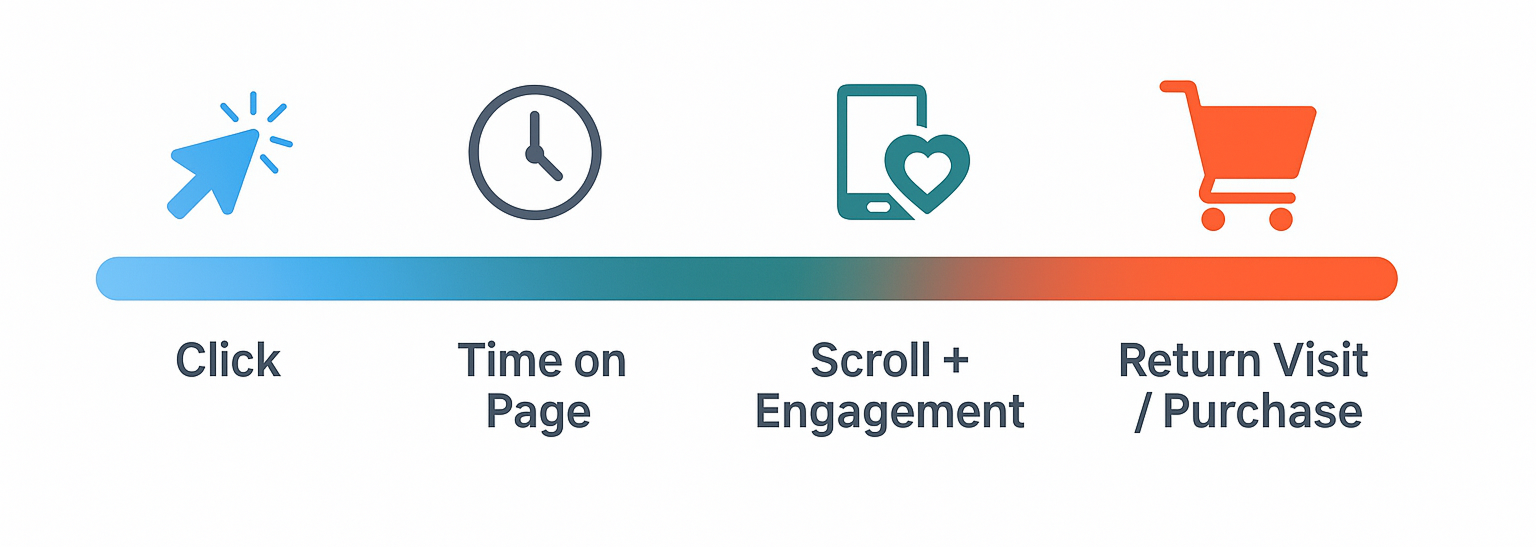Facebook targeting has changed. Again. And by 2026, the strategies that used to work will not be enough. Privacy shifts, smarter algorithms, and higher competition are rewriting the rules.
So, what will work?
This article breaks down future-forward strategies and actionable tips that will help you stay relevant and profitable.
1. First-Party Data Will Rule (And You Need to Act Like It)
Relying on Meta's pixel or broad interest targeting alone? That won't cut it. In 2026, the best-performing campaigns will be rooted in first-party data.

Use the following to build smarter Custom Audiences:
-
Website behavior data — Don’t just retarget all site visitors. Segment users based on content depth, time on page, and actions taken.
-
CRM uploads — Upload your customer database, but refine it first. Segment based on purchase history, customer lifetime value (LTV), and churn probability.
-
Engaged email lists — Focus on contacts who regularly open and click. Use this as a warm audience or a high-quality source for lookalikes.
These signals feed Meta’s machine learning and sharpen your targeting, even when cross-site tracking becomes less reliable. Learn more about behavioral strategies in this deep-dive on behavior-based Facebook targeting.
2. Group-Based Targeting Will Be a Competitive Edge
Facebook Groups are pools of ultra-specific, self-identified intent. And yet, most advertisers still ignore them.
With tools like LeadEnforce, you can build audiences from group members who:
-
Discuss pain points — These people are actively searching for answers, making them prime candidates for problem-solving offers.
-
Share recommendations — Peer validation is strong. Users exposed to group-endorsed products show higher conversion intent.
-
Represent micro-niches — These audiences are too narrow for interest targeting but often outperform broad segments.
Once you create custom audiences with group followers, you can create high-converting lookalikes or even segment them by group category. This method has proven especially effective in high-ticket and B2B niches. Curious how it works? Check out this step-by-step guide.
3. Precision Segmentation Will Outperform Broad Bidding
In past years, the common advice was "go broad and let Meta optimize." While still useful at scale, in 2026 that strategy leads to fatigue and inefficiency for smaller and mid-size budgets.
| Funnel Stage → | Cold Audience | Warm Audience | Hot Audience |
|---|---|---|---|
| Engagement Depth ↓ | Watched 3s video / clicked once | Watched 50%+ / commented | Watched 95% / saved / repeat visitor |
| Recommended Ad Type | Awareness ad, no CTA | Benefit-focused ad with CTA | Offer, proof, urgency |
Instead, segment your audiences by:
-
Funnel stage — Show awareness ads to cold prospects, comparison content to mid-funnel leads, and urgency offers to hot leads.
-
Engagement depth — A person who watched 95% of your video is not the same as someone who bounced after 3 seconds.
-
Content interaction type — Differentiate between users who saved posts, commented, or just liked a photo. Each action reflects a unique level of intent.
Create custom creatives for each segment. For example:
-
Cold viewers: problem-aware angles, no CTA.
-
Warm engagers: benefits, credibility, clear CTA.
-
Hot leads: urgency, proof, irresistible offer.
Need help structuring it? This Facebook Ads funnel strategy offers a full breakdown.
4. Lookalike Audiences Must Be Built on Quality, Not Quantity
Lookalikes are still powerful — if you feed them right. Instead of uploading all your buyers, segment your source audience by:
-
LTV tiers — Use your top 10% of customers by value. These users are most likely to produce profitable lookalikes.
-
Purchase frequency — Frequent buyers tend to show stronger behavioral consistency, making lookalike modeling more accurate.
-
Engagement patterns — Build seed audiences from people who consistently engage, open emails, and revisit landing pages.
This creates sharper, smaller seed audiences that are easier for Meta to model. Avoid mixing low-intent or low-quality contacts. For more on optimizing your seed data, see Custom vs Lookalike Audiences.
Pro tip: Always test your lookalike against its source audience. Sometimes the seed itself performs better — especially with smart exclusions in place.
5. Targeting Signals > Surface-Level Clicks
Clicks are easy. Conversions are complex. And Meta knows the difference.

To really train the algorithm in 2026, you’ll need to optimize for deeper signals:
-
Time on page — Shallow visits may indicate curiosity, but longer dwell times show real interest.
-
Scroll and engagement combos — Combine add-to-cart with scroll depth to find truly interested users.
-
Return visits — Track repeat visitors and delayed conversions. They often bring stronger intent than one-click buyers.
Why does this matter? Because Meta will prioritize people who behave like your ideal customers, not just those who click fast and bounce. This article explains how signal quality impacts your entire campaign performance.
6. Exclusion Logic Will Make or Break ROAS
Targeting is only half the equation. In 2026, exclusion logic will be just as important.
Smart advertisers will:
-
Exclude buyers from top-of-funnel campaigns to avoid waste.
-
Exclude recent visitors from retargeting pools temporarily to avoid spamming users who are still deciding.
-
Use custom time windows — For example, exclude people who visited your product page within the last 3 days but didn’t buy.
This tightens audience relevance and boosts performance. Seeing delivery issues like "Ad Set May Get Zero"? Here's how to troubleshoot it.
Final Word: Smarter Strategy, Better Results
Meta will keep evolving, but your targeting must evolve faster. In 2026, successful campaigns will combine accurate signals, segmented audience logic, and personalized messaging to achieve results.
Want to level up your approach? Start with the fundamentals in Facebook Ad Targeting 101.

